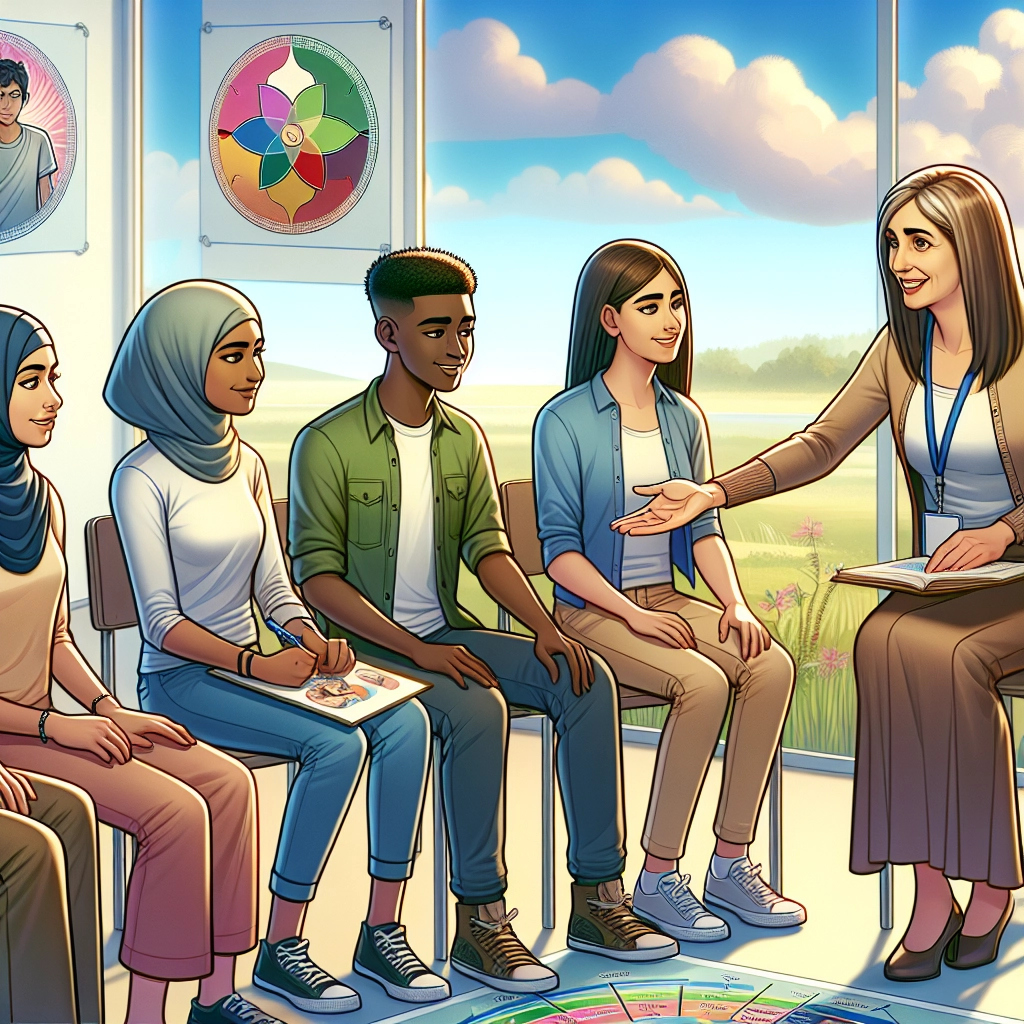Tier 3 Social-emotional Interventions: Effective Strategies


Tier 3 social-emotional interventions refer to the intensive individualized support provided to students who are experiencing significant social and emotional challenges.
Tier 3 interventions are important in addressing specific student needs, especially for those who are unresponsive to Tier 1 and Tier 2 efforts and require more targeted support.
These interventions focus on the needs of individual students who are experiencing significant problems in social and emotional domains, providing tailored support to address their specific challenges.
Check out this Youtube video: Learn how to effectively engage families in tier 3 social-emotional interventions to support the holistic development of students.
Understanding Tier 3 Interventions
Identifying Students Who Need Tier 3 Interventions
Tier 3 interventions are essential for students who exhibit persistent complex needs that cannot be addressed through general or Tier 2 supports. They require intensive, individualized attention due to their struggle to make progress within the regular curriculum.
These students typically demonstrate minimal response to previous interventions and display significant disruptions in their academic or social-emotional functioning.
Characteristics of Students Who Require Tier 3 Social-emotional Interventions
Students in need of Tier 3 social-emotional interventions often present with severe emotional or behavioral challenges. They may lack coping skills, struggle to regulate their emotions, and encounter difficulty when interacting with peers or authority figures.
These students tend to demonstrate consistent patterns of social dysfunction, leading to disruptions in the classroom environment.
The Role of Educators and School Staff in Implementing Tier 3 Interventions
Educators and school staff play a crucial role in implementing Tier 3 interventions by providing structured, individualized support. This support can entail a multidisciplinary approach involving special education teachers, school counselors, and behavior specialists.
The focus is on data-driven decision-making and personalized, recursive interventions. By leveraging a collaborative effort, educators can effectively address the unique needs of students requiring Tier 3 interventions.
| Tier 3 Interventions | |
|---|---|
| Student Needs | High-intensity, individualized support due to persistent academic or social-emotional challenges |
| Educator’s Involvement | Multidisciplinary approach, data-driven decision-making, and personalized, recursive interventions |
| Key Characteristics | Severe emotional or behavioral challenges, struggle with social interaction, and minimal response to prior supports |
Creating a Supportive Environment
Creating a supportive environment in schools is crucial for the success and well-being of students. By fostering a safe and inclusive school culture, students feel valued and accepted, leading to improved academic performance and social-emotional development.
Building a Safe and Inclusive School Culture
Establishing a safe and inclusive school culture involves promoting diversity, equity, and empathy among students and faculty. Encouraging open discussions about different perspectives, cultures, and backgrounds can help create a sense of belonging for all students.
Providing Individualized Support for Students in Need of Tier 3 Interventions
For students requiring tier 3 social-emotional interventions, providing individualized support is key. This may involve personalized counseling, tailored academic assistance, or targeted behavior intervention plans to address specific needs and challenges effectively.
Collaborating with Families and Caregivers
Collaborating with families and caregivers is essential in creating a supportive environment. Open communication, parent-teacher partnerships, and involving families in decision-making processes can contribute to a holistic support system for students.
Effective Strategies for Tier 3 Interventions
Targeted Interventions for Social-emotional Learning
We need highly targeted and personalized interventions for social-emotional learning at tier 3. These interventions should be tailored to individual students’ specific needs and challenges. By focusing on targeted strategies, we can effectively address the unique emotional and social difficulties of each student.
Implementing Evidence-based Programs and Practices
It is crucial to implement evidence-based programs and practices for tier 3 social-emotional interventions. These programs and practices should be rooted in solid research and proven outcomes to ensure their effectiveness.
By employing evidence-based approaches, we can be confident that we are providing the most impactful support for students in need.
Utilizing Cognitive-behavioral Approaches
Utilizing cognitive-behavioral approaches is essential for tier 3 interventions. These approaches empower students to recognize and change negative patterns of thinking and behavior.
By incorporating cognitive-behavioral techniques, we can directly address the underlying issues affecting students’ social and emotional well-being.
Incorporating Mindfulness and Self-regulation Techniques
Incorporating mindfulness and self-regulation techniques is a powerful strategy for tier 3 interventions. These techniques can help students manage stress, regulate their emotions, and improve their overall well-being.
By teaching mindfulness and self-regulation, we can equip students with valuable lifelong skills to navigate their social-emotional challenges.
| Tier 3 Intervention Strategies | Importance |
|---|---|
| Targeted Interventions | Personalized support for individual needs |
| Evidence-based Programs | Ensuring effectiveness through proven outcomes |
| Cognitive-behavioral Approaches | Addressing negative thinking and behavior patterns |
| Mindfulness Techniques | Equipping students with lifelong self-regulation skills |
These strategies play a crucial role in providing effective tier 3 social-emotional interventions, ensuring that students receive the support they need to thrive emotionally and socially.
Collaborative Team Approach
Collaborative team approach is crucial in implementing effective tier 3 social-emotional interventions. The multidisciplinary collaboration among educators, counselors, and mental health professionals ensures a holistic approach to addressing the needs of individual students.
By pooling together diverse expertise and perspectives, the team can develop comprehensive intervention plans that cater to the unique requirements of each student. This collaboration fosters a supportive environment where the strengths of each profession are leveraged to create a more effective support system for students in need.
When developing individualized intervention plans, the collaborative team considers the input from all stakeholders involved in the student’s well-being. Each plan is tailored to address specific emotional or behavioral challenges, taking into account the student’s strengths and struggles.
This personalized approach ensures that interventions resonate with the individual needs of the student, leading to more impactful results and greater student engagement.
Furthermore, the collaborative team continuously monitors and adjusts interventions based on student progress. Regular feedback and assessment allow for the timely modification of intervention strategies, ensuring that they remain responsive to the changing needs of students.
This adaptive approach enhances the effectiveness of tier 3 social-emotional interventions, promoting positive outcomes for students while fostering a culture of continuous improvement within the educational environment.
Data-Driven Decision Making
Collecting and Analyzing Data to Inform Intervention Strategies
Data collection for intervention strategies involves gathering information from diverse sources, including student information systems, surveys, and assessment tools. Utilizing data analysis tools enables educational institutions to visualize data and derive valuable insights, aiding in the development of effective intervention strategies.
Using Assessment Tools to Measure the Effectiveness of Tier 3 Interventions
Assessment tools play a pivotal role in determining the effectiveness of Tier 3 interventions. Educators can employ tools such as formative assessments, exit slips, and brief quizzes to gauge the impact of interventions at the classroom level.
Additionally, Constant monitoring and evaluation are essential to ascertain the efficacy of intervention strategies and ensure continuous improvement.
Benefits of Data-Driven Decision Making
Examples
Enhanced Decision-Making
Utilizing student assessment data to tailor individualized intervention plans.
Improved Student Outcomes
Implementing targeted interventions based on data analysis to boost student performance.
Effective Resource Allocation
Allocating resources based on data insights to optimize support for students in need.
Professional Development and Training
Providing Ongoing Training for Educators and School Staff
One effective method for providing ongoing training for educators and school staff is to break down the training into discrete skills that can be practiced individually and build upon each other. This allows educators to focus on specific areas for improvement and track their progress.
To ensure effective implementation of Tier 3 interventions, educators should have the opportunity to create personalized plans or scripts for integrating the interventions into their classrooms. This enables them to tailor the interventions to their students’ specific needs and learning environments.
Furthermore, it is crucial to allocate time for educators to engage in role-playing and practice scenarios related to Tier 3 interventions. This hands-on approach allows them to familiarize themselves with the interventions and gain confidence in applying them in real-life classroom situations.
Building Capacity for Implementing Tier 3 Interventions Effectively
In building capacity for implementing Tier 3 interventions effectively, ongoing professional development plays a pivotal role. School leaders should lead by example, actively participating in training sessions and demonstrating the value of professional development to their staff.
Additionally, it is essential for school districts to pair professional development training with continuous support and evaluation. This ensures that educators receive the necessary guidance to effectively implement Tier 3 interventions and allows for ongoing improvement based on evaluation feedback.
In essence, providing ongoing training for educators and building capacity for Tier 3 interventions are indispensable strategies in creating a supportive and effective learning environment for students’ social-emotional development.
Addressing Barriers and Challenges
Overcoming Resistance to Change
To overcome resistance to change, effective communication is key. Providing clear guidance on goals and targets can help employees understand the purpose and direction of the change.
Breaking down change projects into smaller milestones and celebrating achievements along the way is an impactful strategy to garner support and build momentum for the change.
Addressing Resource Limitations and Funding Constraints
When facing resource limitations and funding constraints, it’s crucial to identify and resolve constraints early on. This involves recognizing deficits and boundaries applicable to project resources.
Financial constraints play a key role in determining the capacity, availability, and allocation of other resources. Effectively managing and maximizing available resources is essential to navigate through these constraints proactively.
Ensuring Equity and Access to Tier 3 Interventions for All Students
Ensuring equity and access to tier 3 interventions for all students requires a data-based decision-making approach. It involves identifying needed adjustments to tier 3 practices, maximizing available resources, and ensuring that all students have equal opportunities to benefit from the interventions.
Implementing best practices at tier 3 is critical to cater to the unique needs of each student and foster an inclusive learning environment.
Evaluation and Continuous Improvement
Evaluating the Overall Impact of Tier 3 Interventions on Student Outcomes
When evaluating the overall impact of tier 3 social-emotional interventions on student outcomes, it’s crucial to assess the effectiveness of these interventions in addressing specific student needs. This evaluation should involve collecting and analyzing data on students’ progress and behavior before and after the implementation of the interventions.
Additionally, conducting regular assessments and gathering feedback from students, teachers, and parents can provide valuable insights into the impact of tier 3 interventions on student outcomes.
Implementing Feedback Loops for Continuous Improvement
Implementing feedback loops for continuous improvement in tier 3 interventions involves creating structured mechanisms to gather feedback from all stakeholders involved in the intervention process. This feedback should be used to identify areas that require adjustment, maximize available resources, and ensure that the interventions are meeting the diverse needs of all students.
By establishing a systematic approach to collecting and implementing feedback, educational institutions can drive continuous improvement in tier 3 social-emotional interventions, leading to better outcomes for students.
Recommended Amazon Products for Tier 3 Social-emotional Interventions
Here’s a curated list of products that can help you address the specific needs of students who require tier 3 social-emotional interventions with ease. These recommendations are based on functionality, price, and reviews.
[Book: “Lost and Found: Helping Behaviorally Challenging Students (and, While You’re At It, All the Others)”] (https://www.amazon.com/s?k=Lost+and+Found+Helping+Behaviorally+Challenging+Students)


This book provides practical strategies and interventions for educators and school staff to support behaviorally challenging students in a tier 3 intervention setting.
Pros and Cons
| Pros | Cons |
|---|---|
| Offers evidence-based approaches | Can be time-consuming to implement |
| Provides actionable insights | Requires ongoing professional development |
[Mindful Games Activity Cards: 55 Fun Ways to Share Mindfulness with Kids and Teens] (https://www.amazon.com/s?k=Mindful+Games+Activity+Cards)


This set of activity cards offers a variety of mindfulness exercises and games to help students develop self-regulation skills in a tier 3 intervention setting.
Pros and Cons
| Pros | Cons |
|---|---|
| Engaging and interactive resource | Some activities may require specific materials |
| Suitable for various age groups | Not all exercises may resonate with every student |
[Social Emotional Learning – 25 Games and Activities for Kids and Teens] (https://www.amazon.com/s?k=Social+Emotional+Learning+25+Games+and+Activities)


These games and activities are designed to promote social-emotional learning and can be used as targeted interventions for students in need of tier 3 support.
Pros and Cons
| Pros | Cons |
|---|---|
| Provides a wide range of activities | Some activities may require specific materials |
| Encourages interaction and communication | Not all games may appeal to every student |
[Empower ADHD Kids: Practical Strategies to Assist Children with ADHD in Building Self-Esteem, Independence, and Personal Responsibility] (https://www.amazon.com/s?k=Empower+ADHD+Kids)


This book offers practical strategies and interventions specifically tailored to address the needs of students with ADHD in a tier 3 intervention setting.
Pros and Cons
| Pros | Cons |
|---|---|
| Focuses on a specific student population | Some strategies may require significant effort to implement |
| Emphasizes empowerment and independence | May require additional support and resources |
[DBT® Skills Training Handouts and Worksheets, Second Edition] (https://www.amazon.com/s?k=DBT+Skills+Training+Handouts+and+Worksheets)


This comprehensive collection of handouts and worksheets provides educators and mental health professionals with accessible resources for implementing dialectical behavior therapy (DBT) skills in a tier 3 intervention setting.
Pros and Cons
| Pros | Cons |
|---|---|
| Offers a wide range of practical resources | Some concepts may require extensive explanation |
| Supports the implementation of evidence-based practices | Requires familiarity with DBT principles |
Top Recommended Product for Tier 3 Social-emotional Interventions
If you’re looking for the best solution for tier 3 social-emotional interventions, we highly recommend the Mindful Games Activity Cards: 55 Fun Ways to Share Mindfulness with Kids and Teens. This set of activity cards offers a variety of mindfulness exercises and games to help students develop self-regulation skills in a tier 3 intervention setting.


Ready to improve your tier 3 social-emotional interventions? Check out the Mindful Games Activity Cards today for the best results!


Conclusion
Tier 3 social-emotional interventions are crucial for supporting students with significant behavioral and emotional needs. These targeted interventions provide individualized support and resources to help students develop the necessary skills to succeed in a school setting.
By addressing the specific needs of these students, tier 3 interventions can have a significant impact on their overall well-being and academic success.
Tier 3 social-emotional interventions also play a vital role in creating a positive and inclusive school environment. By providing personalized support to students with complex needs, these interventions help foster a sense of belonging and support within the school community.
This can lead to improved student engagement, reduced negative behaviors, and increased academic achievement among the students who receive tier 3 support.
In addition, tier 3 social-emotional interventions are an essential component of a multi-tiered system of support (MTSS) framework. These interventions offer a targeted approach to meeting the diverse needs of students, ensuring that all students have access to the support and resources they need to thrive.
By providing intensive, individualized interventions, tier 3 supports contribute to the overall effectiveness and success of the MTSS framework in schools.











